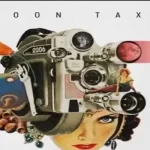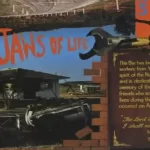Music, in its essence, transcends the barriers of language and communicates directly to the soul. It has the remarkable ability to evoke emotions, tell stories, and transport us to different realms. Among the diverse genres that grace the musical landscape, instrumental music stands as a timeless testament to the power of melody and harmony.
Music Songs
Instrumental music, as the name suggests, is a genre that relies solely on musical instruments to convey its message. In the absence of lyrics, it challenges both the composer and the listener to embrace a form of storytelling that transcends verbal communication. Compositions like Ludovico Einaudi’s “Nuvole Bianche” and Yiruma’s “River Flows in You” exemplify the capacity of instrumental music to create vivid narratives without uttering a single word.
Instrumental Music Across Eras – A Snapshot of Artists and Styles
| Era | Instrumental Focus | Key Artists | Notable Works |
|---|---|---|---|
| Classical | Single instruments, mainly keyboards | Haydn, Mozart, Beethoven, Schubert | Piano sonatas, miniature tone poems, national dances |
| (piano, harpsichord, organ) | |||
| Romantic | Smaller forms, virtuosos’ display pieces | Chopin, Liszt, Brahms, Mendelssohn | Mazurkas, polonaises, technical display pieces |
| Transcriptions of songs and opera arias | |||
| Baroque | Harpsichord, organ, solo guitar, solo lute | J.S. Bach, Handel, Couperin, Scarlatti | Harpsichord compositions, lute works |
| Solo violin, solo cello | |||
| Contemporary | Expansive range of solo instruments | Contemporary Spanish, Latin American | Solo violin compositions, solo guitar pieces |
In the Classical era, notable composers like Haydn, Mozart, Beethoven, and Schubert contributed significantly to the piano sonata, a popular form of keyboard music. The Romantic period introduced smaller forms and technical display pieces, often performed by virtuoso pianists such as Chopin, Liszt, and Brahms. These composers also created transcriptions of songs and opera arias for their instruments.
During the Baroque era, J.S. Bach, Handel, Couperin, and Scarlatti made important contributions to the harpsichord repertoire, while the lute works of Weiss and Dowland added to the instrumental landscape. Bach’s sonatas and partitas for solo violin remain iconic in the solo violin genre.
In the contemporary scene, Spanish and Latin American composers have crafted a vast array of music for solo guitar, capturing the essence of their cultures. Solo violin compositions continue to evolve, showcasing the instrument’s versatility.
These eras reflect the evolution of instrumental music and its dynamic interaction with various instruments, styles, and artistic expressions.
list of instrumental music genres and some of their subgenres:
1. Classical Instrumental:
- Keyboard Music (Piano, Harpsichord, Organ)
- Piano Sonata
- Miniature Tone Poems
- National Dances (Mazurkas, Polonaises)
- Harpsichord Music (Bach, Handel, Couperin, Scarlatti, Soler)
- Guitar Music (Sor, Giuliani, Spanish and Latin American composers)
- Lute Music (Weiss, Dowland)
- Solo Violin and Cello Music (Bach’s Sonatas and Partitas)
2. Instrumental Rock:
- Progressive Rock
- Post-Rock
- Surf Rock
- Space Rock
- Jazz-Rock Fusion
3. Instrumental Hip-Hop:
- Chillhop
- Boom Bap
- Lo-Fi Hip-Hop
- Experimental Hip-Hop
4. Instrumental Jazz:
- Bebop
- Cool Jazz
- Free Jazz
- Smooth Jazz
- Acid Jazz
5. Classical Music:
- Baroque
- Classical
- Romantic
- Contemporary Classical
- Orchestral Music
6. Marching Band:
- Military Marches
- Parade Music
- Drum Corps
- Brass Band Music
Music Examples
Instrumental music embraces a multitude of styles, each painting a different emotional canvas. The haunting melodies of Max Richter’s “On the Nature of Daylight” evoke contemplation, while the uplifting notes of Vangelis’ “Chariots of Fire” infuse a sense of triumph. These examples illustrate how instrumental music effortlessly taps into human emotions, fostering a deep connection between composer and listener.
Characteristics of Instrumental Music
Instrumental music encompasses various characteristics that distinguish it from vocal music. These include:
- Focus on Instruments: The absence of vocals directs attention towards the musical instruments themselves, highlighting their unique timbres, textures, and capabilities.
- Melodic Emphasis: Instrumental compositions often place a strong emphasis on melodies conveyed through instruments. This allows for intricate and expressive melodies to shine.
- Expressive Dynamics: Instruments have the ability to convey a wide range of emotions through dynamics, enabling composers to create evocative musical narratives.
- Harmonic Exploration: Instrumental music often delves into complex harmonic progressions and modulations, allowing for intricate interplay between different musical elements.
- Rhythmic Variety: Rhythmic patterns can be highly diverse in instrumental music, showcasing intricate rhythms, syncopations, and polyrhythms.
- Experimental Freedom: Without vocal constraints, instrumental compositions offer composers and performers greater freedom to experiment with structure, form, and musical techniques.
- Universal Appeal: As instrumental music lacks language barriers, it can connect with audiences worldwide, appealing to emotions and transcending linguistic boundaries.
Types of Instrumental Music
Instrumental music encompasses a plethora of genres, each offering a distinct musical experience. Here are five popular types of instrumental music:
- Instrumental Rock: This genre showcases the raw energy of rock music through instruments alone. It’s characterized by powerful guitar riffs, dynamic drumming, and often incorporates elements of improvisation. Artists like Joe Satriani, Steve Vai, and Explosions in the Sky are notable within this genre.
- Instrumental Hip-Hop: Instrumental hip-hop removes the vocal component of hip-hop music, focusing on beats, samples, and grooves. This genre highlights the artistry of beat-making and production, with artists like J Dilla and Nujabes leaving a lasting impact.
- Instrumental Jazz: Jazz instrumental music is renowned for its improvisational nature, intricate harmonies, and virtuosic solos. From smooth jazz to avant-garde, jazz instrumentalists like Miles Davis, John Coltrane, and Herbie Hancock have pushed boundaries and redefined the genre.
- Classical Music: Classical instrumental music encompasses a vast array of compositions written for various instruments and ensembles. From the grandeur of symphonies to the intimacy of chamber music, composers like Bach, Mozart, Beethoven, and Tchaikovsky have left an enduring legacy.
- Marching Band: Marching bands are synonymous with parades, sporting events, and celebrations. This genre features a diverse range of instruments, including brass, woodwinds, and percussion, coming together to create spirited and rhythmically dynamic performances.
Stylistic Origins
The roots of instrumental music can be traced back to ancient civilizations, where rudimentary instruments were used to communicate, celebrate, and commemorate. Over the centuries, instrumental music evolved, finding its way into classical symphonies, folk traditions, and religious ceremonies. This evolution laid the groundwork for the diverse range of instrumental styles we encounter today.
Cultural Origins
Instrumental music is an intrinsic part of cultural heritage across the globe. From the haunting melodies of Indian sitars to the rhythmic beats of African drums, each culture infuses its unique identity into instrumental compositions. This genre serves as a vessel for preserving traditions and passing down stories from one generation to the next.
FAQ
Q1: What is the history of instrumental music?
A: Instrumental music dates back to ancient civilizations, evolving over time to encompass classical symphonies, folk traditions, and contemporary styles, reflecting the cultural tapestry of humanity.
Q2: How does instrumental music evoke emotions?
A: Through the skillful use of melody, harmony, and rhythm, instrumental music taps into the listener’s emotions, allowing for personal interpretation and connection.
Q3: Can instrumental music tell stories without lyrics?
A: Absolutely. Instrumental compositions create narratives through musical motifs, dynamics, and textures, inviting listeners to weave their interpretations.
Q4: What role does instrumental music play in modern culture?
A: Instrumental music contributes to soundtracks, enhances cinematic experiences, and offers a meditative escape from the fast-paced modern world.
Q5: Are there cultural variations in instrumental music?
A: Yes, each culture infuses its distinctive musical traditions and instruments, enriching the global tapestry of instrumental music.
Conclusion
Instrumental music, a genre that transcends linguistic confines, remains a testament to the universal language of melody and rhythm. From its ancient origins to its contemporary subgenres, instrumental music has woven itself into the fabric of human expression. As we embark on a harmonious journey through its diverse landscapes, we find solace, inspiration, and a profound connection to the symphony of life itself.







